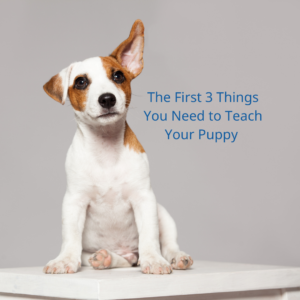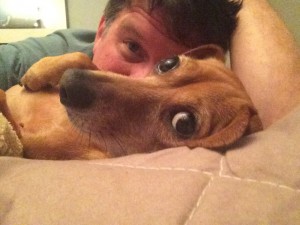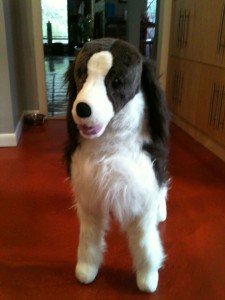Michael Baugh CDBC CPDT-KSA CSAT
These are not the only things you need to teach your puppy. They are, however, the fist things I think we should be teaching young dogs.
 #3 Come When I Call. This one takes priority for me because it’s so easy. Our little puppies are already following us around, curious about our every movement. Let’s use that to our advantage. Call them often and give a small bit of food every time they come. To make it even more effective, choose a word or phrase (also called a cue) that you will use every time, and every time they come you be sure to give that little morsel of food. Your dog will grow up having learned that coming when called is always good news. They’ll run to you every time you call.
#3 Come When I Call. This one takes priority for me because it’s so easy. Our little puppies are already following us around, curious about our every movement. Let’s use that to our advantage. Call them often and give a small bit of food every time they come. To make it even more effective, choose a word or phrase (also called a cue) that you will use every time, and every time they come you be sure to give that little morsel of food. Your dog will grow up having learned that coming when called is always good news. They’ll run to you every time you call.
#2 Potty Here Not There. Young puppies learn this pretty quickly too. And, let’s be honest, no one wants a dog of any size pooping and peeing in the house. My clients follow these simple dog potty training instructions and enjoy great success. Follow the link for some relieve. (haha).
#1 You are Safe. This is my number one pick of the top three because it’s so vitally important. More than anything we should be teaching our young puppies how to safely navigate the human world. You’ve probably heard this called puppy socialization. That’s a well-known term that’s often misunderstood as just exposing the puppy to a bunch of experiences. I like to think of it, instead, as thoughtfully introducing the puppy to the sights, sounds, and experiences of the human world that they will encounter throughout their lives. Let’s set our puppies up to have new experiences, yes, but to also learn these encounters are safe. We don’t flood the puppy with an overdose of stimulation by taking him to a huge family cookout. That can backfire and cause long-lasting fear. Instead we let him meet new people and process new stimuli at his own pace one or two at a time. Giving the puppy choices, rather than forcing him to “handle” new and potentially overwhelming situations is key. This this is how we teach our young dog behavioral flexibility. Follow the link to learn more about that. I also recommend the book Life Skills for Puppies.
Learning is a lifelong process for dogs, just like it is for humans. These first 3 things are a great starting point. But, let’s keep going. The possibilities are nearly limitless.
Michael Baugh teaches dog training in Houston, TX. He specializes in fearful and aggressive dog behavior.


